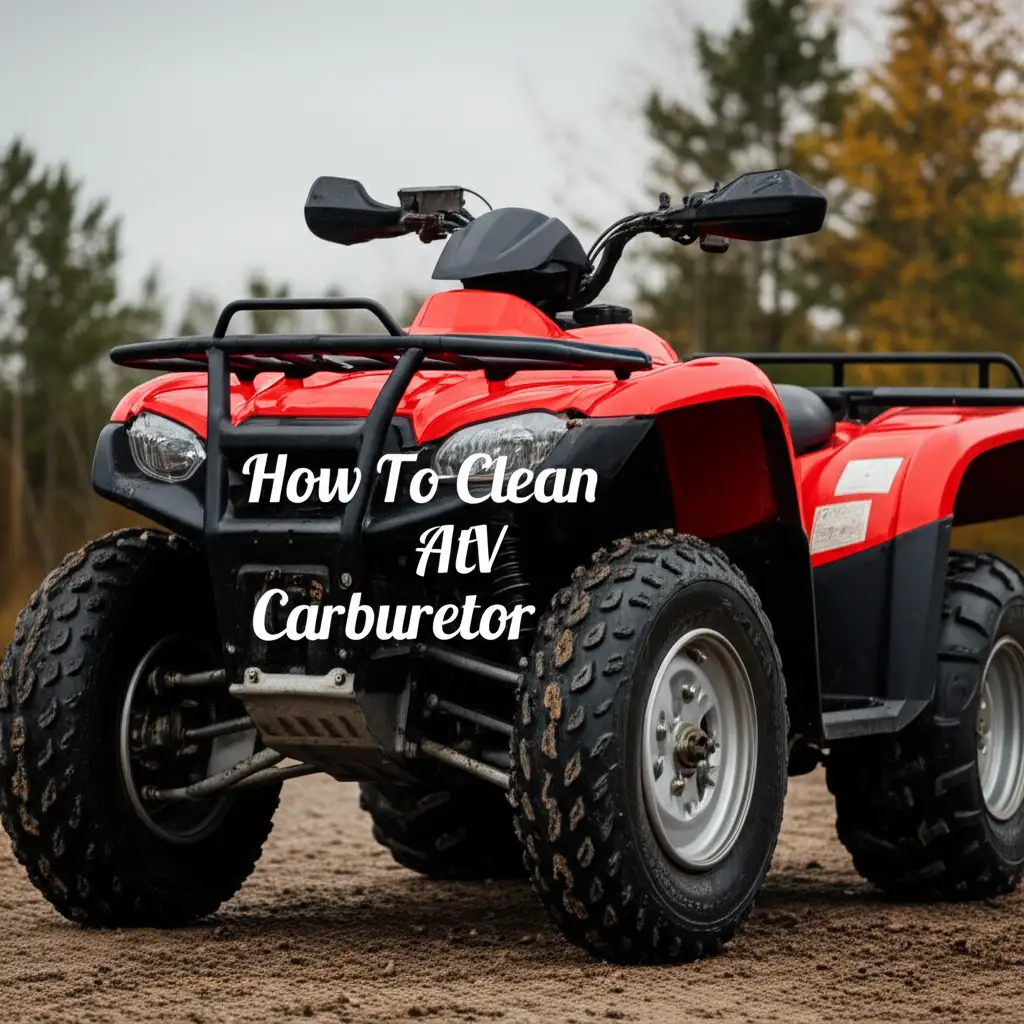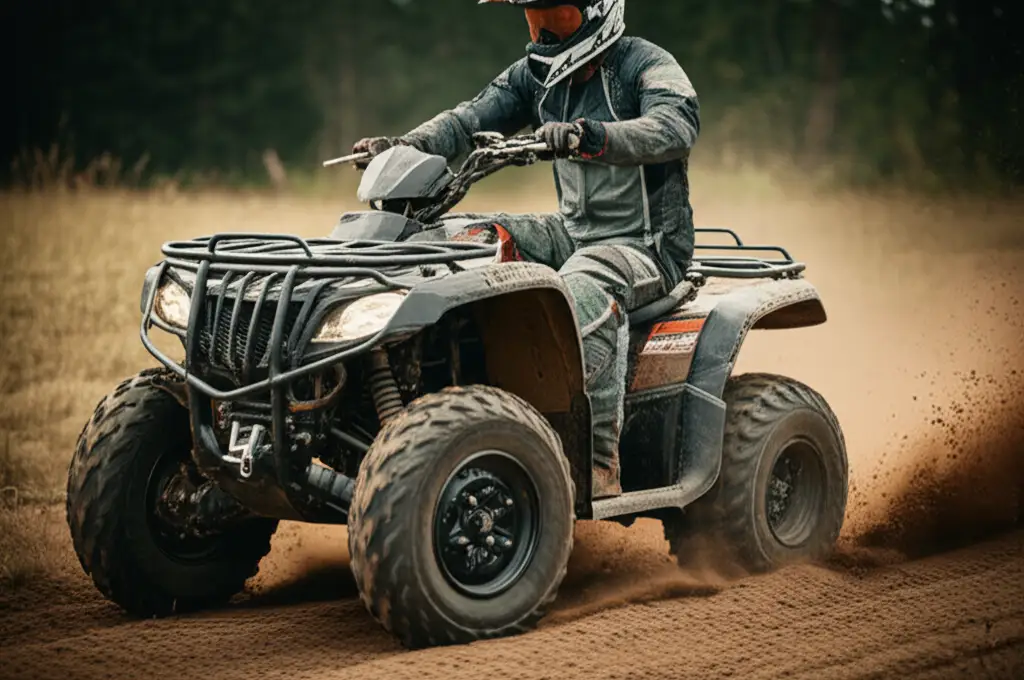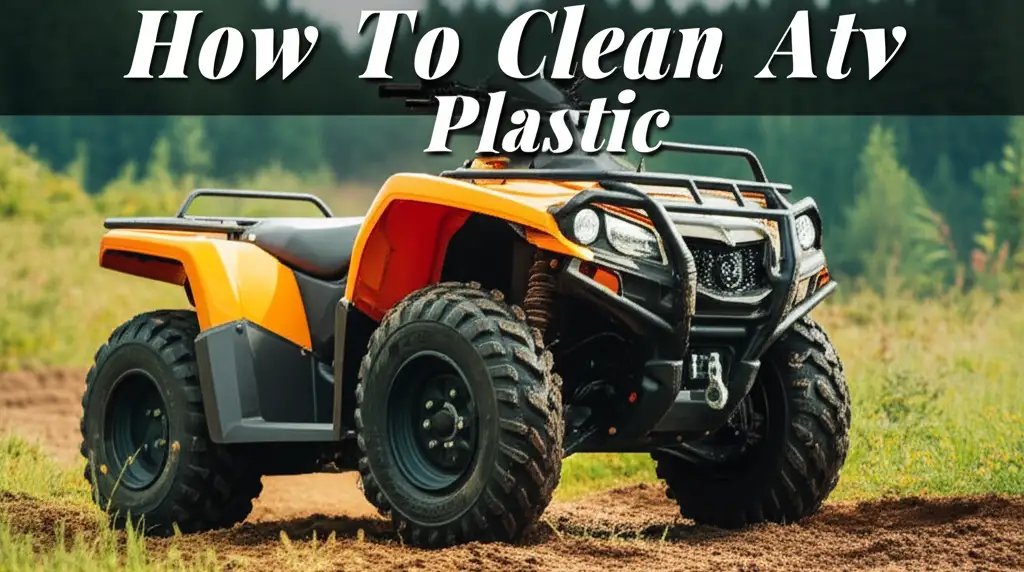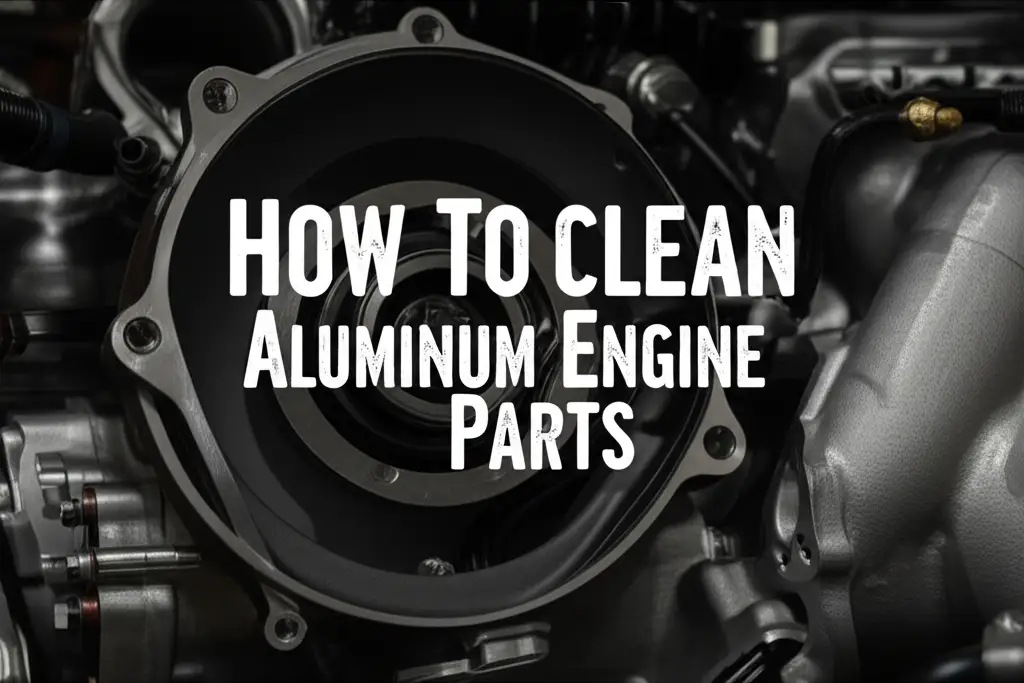· ATV Maintenance · 12 min read
How To Clean Atv Carburetor

Master The Art: How To Clean Your ATV Carburetor
Riding an All-Terrain Vehicle (ATV) offers great excitement. You get to explore trails and tackle tough terrain. However, a smooth ride depends on a well-maintained machine. One critical component for your ATV’s power is the carburetor. Over time, fuel deposits and dirt can clog this part. This leads to poor performance, rough idling, or even your ATV not starting.
I have spent many hours working on ATVs. I understand the frustration of a sputtering engine. Learning how to clean an ATV carburetor properly can save you money on repairs. It also ensures your ATV runs at its best. This guide gives you a complete walkthrough. We will cover everything from identifying issues to reassembly. Let’s get your ATV running strong again.
Takeaway
- Identify Issues Early: Look for rough idling, stalling, or poor acceleration. These are signs of a dirty carburetor.
- Gather Tools: You need specific tools and cleaning supplies. Have them ready before you start.
- Prioritize Safety: Disconnect the battery and manage fuel safely. Always wear safety gear.
- Disassemble Carefully: Take photos and keep parts organized. This makes reassembly easier.
- Clean Thoroughly: Use carburetor cleaner and compressed air. Focus on all small passages and jets.
- Reassemble Precisely: Replace old gaskets. Make sure all connections are tight.
- Adjust and Test: Fine-tune idle and mixture screws. Perform a test ride to confirm proper operation.
Cleaning an ATV carburetor involves disassembling, cleaning parts with specialized cleaner and compressed air, and then carefully reassembling. This process removes fuel varnish and debris, ensuring proper fuel-air mixture delivery to the engine. It restores engine performance, improves starting, and prevents stalling.
Signs Your ATV Carburetor Needs Cleaning
You might notice your ATV is not running right. A dirty carburetor is often the cause. The engine needs a precise mix of fuel and air. A clogged carburetor cannot deliver this correctly. This leads to many performance issues. Knowing these signs helps you act fast.
Your ATV might start hard. It may crank many times before it fires up. Once it starts, it might idle roughly. This means the engine speed goes up and down. Sometimes, the engine just stalls out. This can happen especially when you stop or slow down.
Another common sign is poor acceleration. Your ATV might feel sluggish. It may not have its usual power. The engine could also misfire or surge. This feels like the engine is jumping ahead then slowing down. These symptoms point to fuel delivery problems. Dried fuel, varnish, and dirt block the carburetor’s small passages. Cleaning these passages brings back smooth engine operation.
Essential Tools and Supplies for ATV Carburetor Cleaning
Before you start cleaning your ATV carburetor, gather all the necessary items. Having the right tools makes the job much easier. It also ensures you complete the task safely and effectively. I always make a checklist before I begin. This prevents mid-job trips to the store.
First, you will need a set of basic hand tools. These include screwdrivers, both Phillips and flathead. You will also need a socket set and wrenches. Pliers are useful for disconnecting hoses and clamps. A small wire brush or a specialized jet cleaning kit with tiny wires helps clear stubborn clogs in small passages.
For cleaning solutions, purchase a quality carburetor cleaner spray. This spray dissolves varnish and carbon deposits. Compressed air is also vital. It blasts out loosened debris from jets and passages. You will need safety glasses and gloves to protect your eyes and skin from the harsh cleaner. Lastly, it is a good idea to have new gaskets and O-rings on hand. These often get damaged during disassembly. Replacing them ensures a proper seal upon reassembly. I find having a clean workspace with good lighting makes a big difference.
Safety First: Preparing Your ATV for Carburetor Service
Safety is always the top priority when working on any vehicle. Before you begin to clean your ATV carburetor, take some important safety steps. This protects you and prevents damage to your ATV. I always tell people to start with safety first.
First, make sure your ATV is on a level surface. It should be stable and secure. Engage the parking brake. You do not want the ATV to roll or move. Disconnect the negative terminal of your ATV’s battery. This prevents any accidental electrical shorts. It also removes power from the system.
Next, turn off the fuel supply. Most ATVs have a fuel petcock with an “off” position. If yours does not, pinch the fuel line to prevent fuel flow. Place a drip pan under the carburetor. This catches any spilled fuel. Fuel will spill when you disconnect lines. Wear your safety glasses and chemical-resistant gloves. Carburetor cleaner is a strong chemical. Good ventilation is also crucial. Work in a well-aired area or outdoors. Taking a few photos of the carburetor before disassembly helps later. You can see how hoses and cables connect.
Step-by-Step Guide to Disassembling Your ATV Carburetor
Now that you have your tools and safety measures in place, it is time to start the disassembly. This part requires patience and a methodical approach. Remember those photos you took? They will be very helpful now. My first time, I wished I had taken more pictures.
Start by carefully removing the air filter housing. This exposes the carburetor. You may need to loosen clamps and remove screws. Disconnect the throttle cable and choke cable from the carburetor. Label them if needed. Next, disconnect the fuel line. Be ready for some fuel to leak out. Have your drip pan ready. Carefully unbolt or unclamp the carburetor from the intake manifold and airbox boot. Now you can remove the entire carburetor from the ATV.
Once the carburetor is on your workbench, begin its internal disassembly. Start with the float bowl. This is usually held on by screws at the bottom. Remove these screws. Gently tap the bowl to loosen it, then remove it. Inside, you will see the float. This is a plastic or brass component that controls fuel level. Remove the pin holding the float in place. Then carefully remove the float and the needle valve attached to it. Next, identify the jets. These are small brass screws with tiny holes. You will usually find a main jet and a pilot jet. Use the correct screwdriver size to remove them. Be careful not to strip them. Place all removed parts in separate containers or an organized tray. This prevents losing small parts and makes reassembly easier. For a deeper dive into cleaning these critical components, you can learn how to clean jets on carburetor.
Thorough Cleaning Techniques for ATV Carburetor Components
With your ATV carburetor disassembled, it is time for the actual cleaning. This is where you get rid of all the gunk. This step is crucial for restoring your ATV’s performance. I find cleaning deeply satisfying because I see immediate results.
Take each metal component. This includes the float bowl, jets, and the main carburetor body. Spray them liberally with carburetor cleaner. Allow the cleaner to soak for several minutes. This helps dissolve fuel varnish and carbon deposits. For stubborn areas, use a small brush. A toothbrush works well for larger surfaces. For the tiny holes in the jets, use the fine wires from your jet cleaning kit. Push them through each hole. Make sure the light passes through the holes. You want to see no obstructions.
After soaking and scrubbing, use compressed air. Blast air through all the passages in the carburetor body. Pay close attention to the small ports and channels. These are often hidden and easily overlooked. Do the same for the jets. Ensure air flows freely through them. The needle valve and its seat also need a thorough cleaning. Make sure the needle moves smoothly. Do not use wires on rubber or plastic parts. Carburetor cleaner can damage them. For these parts, just use soap and water or replace them if damaged. The principles apply to many engines; you can also use these methods to clean a small engine carburetor effectively.
Reassembly and Installation: Getting Your ATV Back on Track
Once all the components are sparkling clean, it is time to put everything back together. Reassembly requires precision and attention to detail. This is where those organized parts and photos truly pay off. I always double-check my steps during reassembly.
Start by replacing any old gaskets or O-rings with new ones. This ensures a proper seal and prevents fuel leaks. Begin by installing the main jet and pilot jet back into the carburetor body. Hand-tighten them gently. Do not overtighten, as they are brass and can strip easily. Next, reinsert the needle valve into its seat. Then place the float back into position. Slide the float pin through its pivot points to secure it. Make sure the float moves freely up and down. It should not stick.
Carefully reattach the float bowl. Align it correctly and tighten the screws evenly. Replace any other internal components you removed, such as springs or diaphragms. Now, reinstall the entire carburetor back onto your ATV. Connect it to the intake manifold and airbox boot. Tighten the clamps or bolts securely. Reconnect the fuel line, throttle cable, and choke cable. Ensure all connections are tight and secure. Double-check that no hoses are pinched or twisted. Finally, reconnect the negative battery terminal.
Final Adjustments and Post-Cleaning Tips for Optimal ATV Performance
You have cleaned and reassembled your ATV carburetor. Now comes the important step of final adjustments. These fine-tune your ATV’s performance. A well-adjusted carburetor ensures smooth operation and reliable starting. I always take my time with these adjustments.
First, turn the fuel petcock back to the “on” position. Let the fuel bowl fill up. Check for any leaks around the fuel lines or carburetor gaskets. If you see leaks, tighten the connections or replace the gasket. Now, start your ATV. It might take a few cranks to get fuel through the system. Once it starts, let it warm up. Listen to the idle. If it is too high or too low, adjust the idle speed screw. This screw controls how much the throttle plate opens at idle.
Next, you may need to adjust the air-fuel mixture screw. This screw fine-tunes the ratio of air to fuel at idle and low speeds. Turn it slowly, usually in small increments (e.g., 1/4 turn) and listen to the engine. Turn it in or out until the engine idles smoothly and has good response. Different ATVs have different ideal settings, so consult your owner’s manual if unsure. Finally, take your ATV for a test ride. Pay attention to acceleration, throttle response, and overall power. If everything feels good, you have successfully cleaned and adjusted your carburetor. To keep your ATV running well, remember to clean your air filter regularly. A dirty air filter restricts airflow, which can impact carburetor performance. Learn how to clean an ATV air filter for comprehensive maintenance. Also, consider adding fuel stabilizer to your fuel. This helps prevent future fuel deposits.
FAQ Section
How often should I clean my ATV carburetor? You should clean your ATV carburetor based on usage and fuel quality. If you ride often, especially in dusty conditions, clean it yearly. If your ATV sits for long periods, especially with untreated fuel, you may need to clean it before each riding season. Signs like rough idle or stalling also indicate it is time for a cleaning.
Can I clean an ATV carburetor without removing it? Cleaning an ATV carburetor without removing it is possible for light issues. You can use a fuel system cleaner added to the fuel tank. This helps dissolve minor deposits. For more significant clogs or complete cleaning, removing and disassembling the carburetor is necessary. This allows for thorough cleaning of all jets and passages.
What causes an ATV carburetor to get dirty? An ATV carburetor gets dirty mainly from stale fuel. Over time, gasoline can break down and leave behind gummy deposits or varnish. These deposits clog the tiny passages and jets inside the carburetor. Dirt and debris entering through the fuel tank or air filter can also contribute to blockages.
What type of carburetor cleaner should I use? Use a specialized aerosol carburetor cleaner. Look for products designed to dissolve gum, varnish, and carbon deposits. Many brands offer effective cleaners for small engines. Avoid general-purpose cleaners that may not be strong enough or could harm rubber and plastic components inside the carburetor.
What are the signs of a properly cleaned and adjusted carburetor? A properly cleaned and adjusted carburetor results in several improvements. Your ATV will start easily and reliably. It will idle smoothly without surging or stalling. You will experience crisp throttle response and strong, consistent power throughout the RPM range. Fuel efficiency may also improve.
How do I prevent my ATV carburetor from getting dirty again? To prevent future carburetor issues, always use fresh, high-quality fuel. Add a fuel stabilizer to your gas, especially if your ATV sits for more than a few weeks. Regularly check and clean your ATV’s fuel filter and air filter. These steps help keep contaminants out of the fuel system.
Conclusion
You now have a complete guide on how to clean your ATV carburetor. This task might seem daunting at first. However, by following these steps, you can confidently restore your ATV’s performance. Remember, a clean carburetor means a happy engine. It means more time riding and less time troubleshooting.
I have seen countless ATVs brought back to life with a thorough carburetor cleaning. It truly makes a difference in how your ATV starts, runs, and performs. Regular maintenance, including a good carburetor cleaning, extends your ATV’s life. It keeps you ready for every adventure. Do not let a dirty carburetor hold you back. Grab your tools, follow this guide, and get your ATV roaring back to life. You can do this!
- ATV cleaning
- Carburetor repair
- Engine maintenance
- Off-road vehicle care
- Fuel system cleaning




